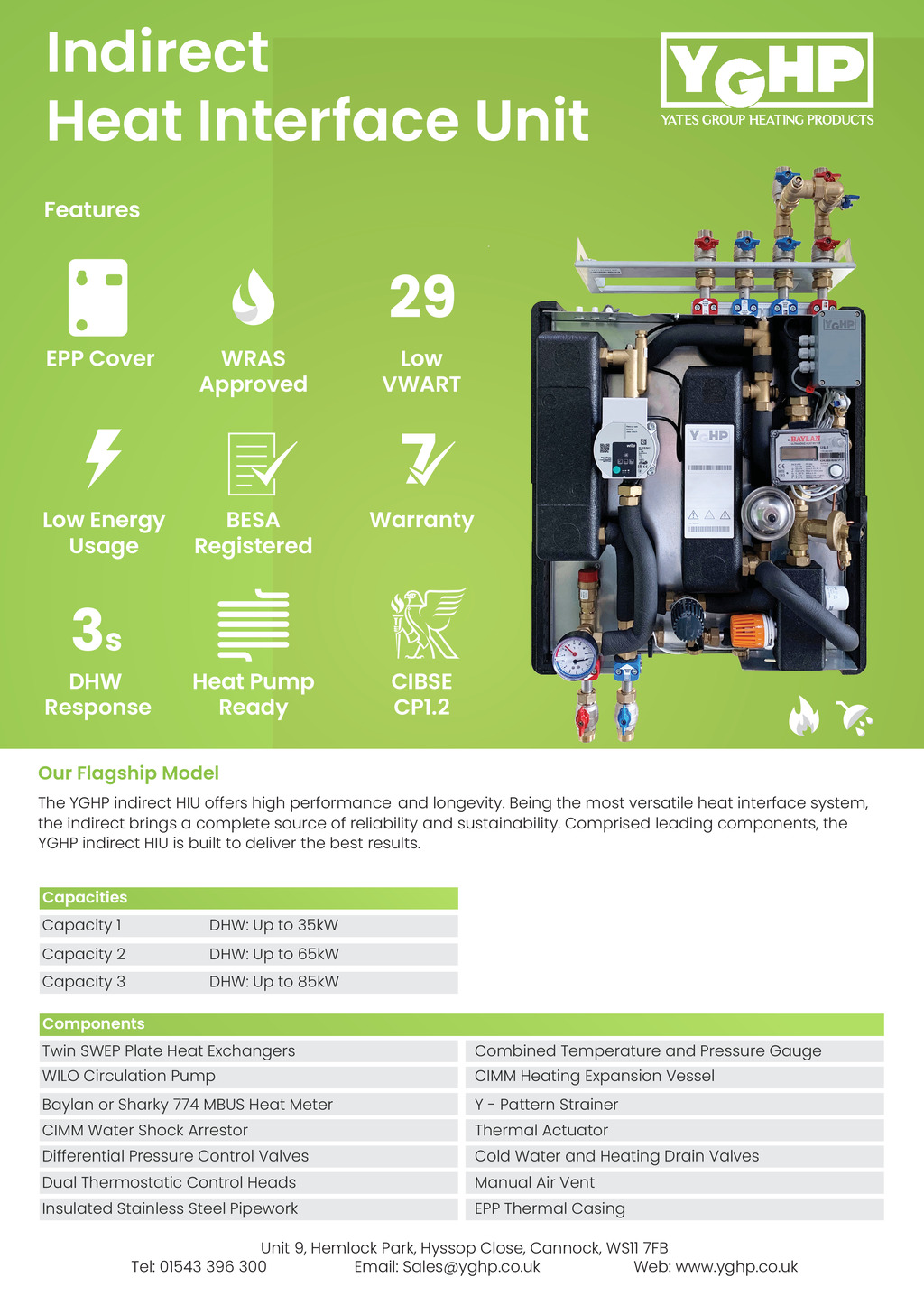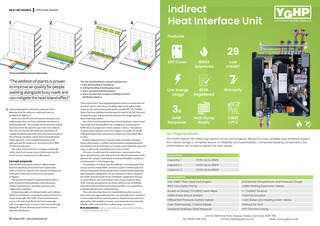




HEAT NETWORKS | PIPEWORK DESIGN 1 2 3 4 The four lead distribution pipework routing concepts The addition of plants is proven to improve air quality for people walking alongside busy roads and can mitigate the heat island effect when proposing for construction contracts where allowances for the unknown could push costs to a prohibitively high level. As the GreenSCIES network has been designed as an ambient loop, there are fewer technical restrictions on locating pipework for example, less need for preventing heat losses from the pipes because of the near-ambient flows. So, the GreenSCIES team took a hypothesis of routing distribution pipework above ground and explored the technical, economic, spatial and social implications of this approach. A more detailed discussion of the approach and the results were presented at the CIBSE Technical Symposium. The vision in GreenSCIES is to design a technically viable, smart local energy system while improving the locals lives by creating more liveable spaces. Concept proposals GreenSCIES consortium member Cullinan Studio has been appraising several alternative approaches, some of which are related to the integration of pipework with public-realm interventions as an alternative to digging. The options developed for appraisal (shown above) took on board technical guidance from third-party product manufacturers, specialist contractors and engineering consultants. Kristina Roszynski, of Cullinan Studio, said: Cullinan Studio is committed to restoring the connection between nature and people. The 5DHC network infrastructure can provide wider benefits for the local community, such as an opportunity to improve their streets through adding bio-diverse planting as part of above-ground pipework distribution. The four lead distribution concepts appraised are: 1. Hard dig trenching in carriageway 2. Soft dig trenching in landscaping/verges 3. Above-ground distribution planters 4. Above-ground road-crossing or building-mounted distribution planters. These options have been appraised against social, environmental and practical criteria, with a focus on adding value to the public realm, reducing risk and minimising disruption to public life. The Viability Matrix has been published and discussed in detail in the full Technical Symposium paper Engineering value and innovative design options for smart local energy systems. One of the novel concepts developed involved planters that conceal raised pipework, laid parallel to the carriageway, creating a green buffer between people and vehicles (option 3, above). The addition of plants along roadways is proven to improve air quality for people walking alongside busy roads and can mitigate the heat island effect in cities. Explored alongside these concepts, is the potential to integrate photovoltaic panels, e-mobility and smartphone charging hardware into planters and street furniture at strategic points along the pipework route, to address the mounting levels of street clutter. Of course, to understand the maintenance requirements of any above-ground options, the long-term horticultural maintenance of the planters, for example, is absolutely crucial and should be considered and planned for at the design stage. In conclusion, we believe that the challenge to develop smart local energy systems around 5DHC networks requires a holistic approach from an integrated technical design team, commercial investigations, and community engagement. We are committed to the co-design of the 5DHC network as part of our community engagement strategy, to ensure that no-one is left behind in the energy transition. Some of the concepts presented are an entirely different way of thinking about the problem of pipework routing and offer a new approach to implementing this form of infrastructure. The work shows that there are considerable benefits in some of these innovative approaches that have not, generally, been considered in more traditional heat-network projects. Implementing such novel approaches with multiple economic, environmental and community benefits will be critical in future urban energy networks. CJ DR AKOS REVESZ is senior research fellow at London South Bank University and technical lead at GreenSCIES 36 August 2021 www.cibsejournal.com CIBSE Aug 21 pp35-36 Heat networks tech symp.indd 36 23/07/2021 12:10